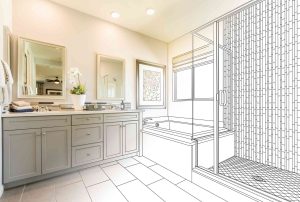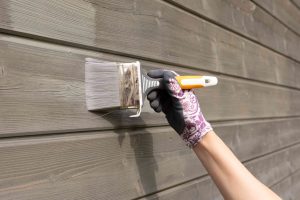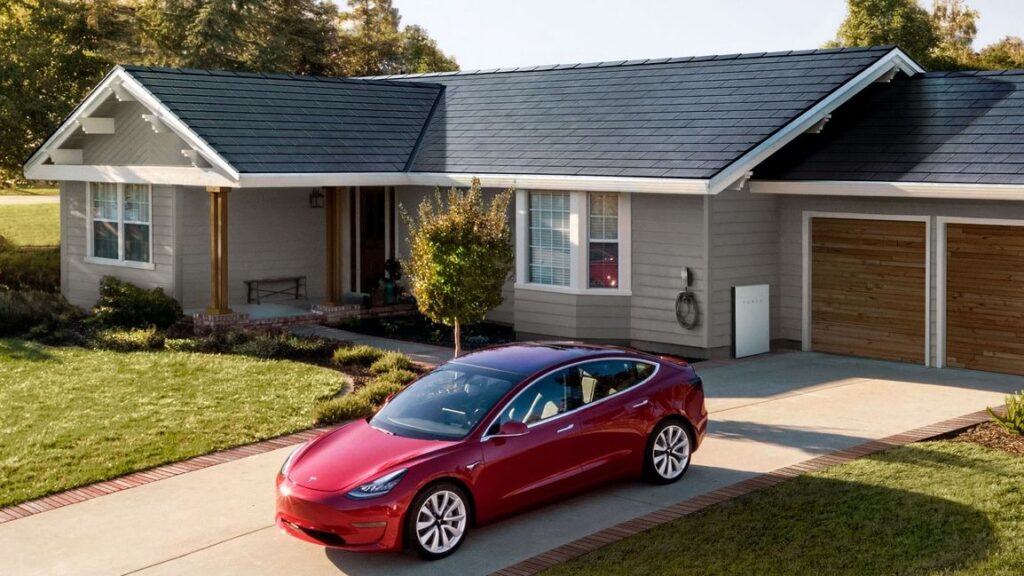The Best Personal Loan Lenders for Roof Financing
The best personal loan lenders for roof financing provide large loan limits, affordable rates and quick approval. Check out our top picks for lenders providing loans to finance roof repairs or replacement.
LightStream: Our Top Pick
LightStream offers a dedicated home improvement loan. There are no home equity requirements for which to qualify, and you have the option to finance any home improvements you’d like. LightStream also has large loan limits and fast funding, so you can get your project underway quickly and ensure you can borrow enough to cover all your costs.
Pros and Cons of LightStream
Borrowers with good to excellent credit might consider LightStream, which offers longer repayment terms than some competitors. However, other lenders offer lower minimum annual percentage rates (APRs) and more variety in loan products.
Pros
- Repayment terms of up to 12 years are available for home improvement loans, providing affordable monthly payments over time.
- LightStream’s $100,000 maximum loan limit ensures you can borrow enough to pay for even expensive roofs.
- A Rate Beat Program ensures you get the best rate on your roof financing, as LightStream will beat eligible competitor offers by 0.10 percentage points.
Cons
- LightStream offers no other loan products besides personal loans, so if you decide you’d prefer a home equity loan or a home equity line of credit to finance your roof or other home improvement projects, you’d need a different lender.
- You need good or excellent credit to qualify for a LightStream loan.
- Some other lenders advertise lower minimum APRs than LightStream.
LightStream Interest Rates
LightStream’s whole-project funding and high borrowing limits mean even homeowners with costlier roof projects may be able to get the roof financing they need. The lender’s lowest rates are about average, with LightStream’s advertised rates below some competitors and above others. The lender’s maximum $100,000 borrowing limit likely ensures you can borrow as much as you need, even for high-end roofs, such as slate or clay.
SoFi: Best Customer Service
SoFi’s home improvement loans are offered for any home repairs you’d like to tackle, and there is no equity requirement. Same-day funding is available, and large borrowing limits help ensure you won’t have to worry about whether you can pay the full cost of repairing or replacing your roof.
Pros and Cons of SoFi
SoFi offers high loan limits and fast funding, but some competitors offer lower rates.
Pros
- Member benefits include financial workshops and the ability to modify payments if you become unemployed.
- A $100,000 loan limit means you can afford slate or other high-end roofing material if desired.
- Same-day funding is available.
Cons
- SoFi’s rates (starting at 8.99% as of this writing) are higher than many competitors, which can make roof financing costlier.
- There’s no in-person customer support to take advantage of.
- A $5,000 minimum borrowing limit makes SoFi less feasible for personal loans for small roof repairs.
SoFi Interest Rates
SoFi’s fee-free home improvement loans do not require an appraisal and are unsecured, so you aren’t putting your home at risk or incurring extra costs. While the lender’s rates are higher than some competitors’, high loan amounts ensure you can cover even costly roofing installs.
PenFed: Best for Small Loans
PenFed is a credit union that provides home improvement loans to members. Roof repairs are specifically mentioned as a potential use for this loan, and PenFed provides funds as soon as the next business day, so there should be little to no delay in getting your roof repair or replacement started.
Pros and Cons of PenFed
PenFed offers personal loans to borrowers with lower credit scores, but you’ll need to become a member before qualifying.
Pros
- PenFed’s rates are competitive, with many other lenders advertising higher starting APRs than the credit union.
- There are no origination fee or prepayment penalties charged.
- Borrowers could qualify for loans with a credit score as low as 580.
Cons
- You must become a credit union member to borrow, which requires opening a savings account and making a $5 deposit.
- The maximum $50,000 loan limit could place higher-end roofing materials out of budget.
- You have just 60 months to repay your roof loan, while many competitors offer longer payoff periods.
PenFed Interest Rates
PenFed promises to help credit union members with affordable home improvement loans. The lender’s rates are extremely competitive, but its maximum $50,000 loan limit means more expensive roofs may be out of reach.
Discover: Best for Low Rates
Discover offers a Home Remodel Loan that does not require you to borrow against your equity. Discover indicates you can borrow for any improvement, including cosmetic upgrades, as well as essential or emergency repair expenses. Rates currently start at 7.99%, one of the lowest we’ve found.
Pros and Cons of Discover
Discover’s loans offer long repayment periods and few fees, but borrowers should expect lower loan limits.
Pros
- Discover offers repayment periods lasting up to 84 months to provide plenty of time to repay your roof loan.
- There are no fees for Discover loans as long as you aren’t late with a payment.
- Applicants can get a same-day decision, so they can get their roofing project underway.
Cons
- Discover’s $40,000 maximum loan limit may not be enough for all roofing projects.
- May charge a late fee if you miss your payment date
- No rate discounts
Discover Interest Rates
Discover’s home remodeling loan is an unsecured loan that provides a speedy application decision. Unfortunately, its $40,000 maximum borrowing limit could mean you may not be able to borrow enough to pay for costlier roofing materials.
Upstart: Best for Bad Credit
Upstart provides home improvement loans even to borrowers with imperfect credit, as the lender considers employment and other factors and looks beyond a credit score model alone. You can check your rate in as little as five minutes without your credit score being impacted.
Pros and Cons of Upstart
Upstart offers low minimum interest rates and considers borrowers with low or nonexistent credit scores. However, expect a trade-off in term flexibility and loan limits.
Pros
- Roof financing may be more affordable for qualified borrowers given Upstart’s low minimum interest rates.
- Upstart considers employment and other factors beyond credit score when setting rates and determining loan eligibility.
- Borrowers can qualify with credit scores as low as 300 or with no credit score at all.
Cons
- Upstart charges origination fees between 0% and 12% of the borrowed amount.
- A $50,000 loan limit is below what some competitors allow and may mean high-end roofs are out of reach.
- A choice of only a three- or five-year repayment term provides less flexibility than some other lenders allow.
Upstart Interest Rates
Upstart’s home improvement loans provide an easy online application process and allow you to borrow without collateral. While the lender’s maximum APR is higher than many competitors, its minimum APR is very affordable, so well-qualified borrowers can pay a reasonable rate to fund their roof repairs or replacement.
U.S. Bank: Best for Bank Switchers
U.S. Bank offers many financing options, relatively low credit score requirements and fast funding. However, the best financing is limited to U.S. Bank customers.
Pros and Cons of U.S. Bank
Pros
- U.S. Bank customers can qualify for larger loans and get approved with lower credit scores.
- Funding can be available to U.S. Bank customers within hours, so borrowers with an urgent need for roof repairs can get their job underway.
- U.S. Bank offers many financing options, so those who decide to explore home equity loans and lines of credit can easily compare all their alternatives.
Cons
- You must be a U.S. Bank customer to get access to the best financing options.
- Unless you qualify for a fee waiver, no free checking options exist to allow you to become a customer.
- U.S. Bank’s loan limits ($25,000 for non-customers and $50,000 for customers) are below what some competitors offer, so slate roofing or other expensive materials may be out of budget.
U.S. Bank Interest Rates
U.S. Bank allows you to check your rates on a home improvement loan without impacting your credit score. The lender also has a dedicated team of experts to help you explore roof financing options. Advertised rates are higher than many competitors, though, so borrowers may want to take advantage of U.S. Bank’s option to check their rates online with no impact to their credit score.
Upgrade: Best Discounts
Unsecured home improvement loans are available from Upgrade for renovations and remodeling, energy-efficient upgrades and home repairs, such as fixing a leaky roof. You can select from multiple loan options and find out your rate and terms within minutes to make an informed choice on roof financing.
You can also benefit from a generous 0.5 point rate discount for using autopay, and earn a rate discount or cash bonus for also signing up for an Upgrade checking account.
Pros and Cons of Upgrade
Upgrade offers longer loan terms and funding within one business day. However, borrowers should expect to pay origination fees and a higher maximum APR.
Pros
- Borrowers can take as long as 84 months to repay their roof loan.
- Funds can be delivered within one business day, so projects can get underway quickly.
- There are no prepayment penalties for early loan payoff.
Cons
- Origination fees of 1.85% and 9.99% make roof financing costlier.
- Upgrade’s maximum APR is well above what many competitors advertise.
- A $50,000 maximum loan limit could make some roofs too costly for borrowers.
Upgrade Interest Rates
Upgrade’s starting rates are on par with competitors, and the lender provides you with the chance to check your rate for a home improvement loan without your credit score being affected. Loan proceeds will be directly deposited into your account shortly after approval, so you can pay contractors directly.
Wells Fargo: Best for In-Person Service
Home improvement loans from Wells Fargo come with no origination fees or prepayment penalties. Branches are available across the country, and you’re able to apply for a loan in person – something not many lenders offer. These loans are, however, available only to existing Wells Fargo customers. No collateral is needed to qualify.
Pros and Cons of Wells Fargo
Wells Fargo home improvement loans are limited to current customers but offer high maximum loan balances.
Pros
- Wells Fargo members can qualify for customer relationship discounts.
- A $100,000 maximum loan balance means even high-end roofs are an option.
- There are no origination fees or prepayment penalties.
Cons
- Only current Wells Fargo customers can qualify for a personal loan.
- Late fees might be imposed if you don’t pay on time.
- Automatic payments from a Wells Fargo account are required to get the best rates.
Wells Fargo Interest Rates
Wells Fargo offers a same-day credit decision for home improvement loans that you can use for a roof remodel. Rates are very competitive, and the lender’s $100,000 maximum loan limit means even costly roofs made of high-end materials should be within reach.
When Should You Consider Roof Financing?
Roof financing is a good option when you cannot afford to pay out of pocket to put a new roof on your home. You should consider roof financing if the following applies:
- You can qualify for a loan at a favorable rate and with good terms.
- You can’t or don’t want to take out a home equity loan or use a home equity loan or credit, either of which could come with a lower interest rate.
A financial adviser can help you decide if a personal loan is the best option for your situation.
How To Obtain Roof Financing
To obtain roof financing, you can take the following steps:
- Obtain quotes from different loan providers: You should consider banks, credit unions and online lenders, as each offers personal loans with different rates and terms.
- Compare costs: Consider the interest rate and upfront fees. The APR shows total borrowing costs each year, expressed as a percentage of the loan.
- Choose a lender: Select a lender with the most favorable terms available to you. You’ll need to assess how long your loan term will be and exactly how much to borrow.
- Submit a loan application: Most lenders allow you to apply online, and some provide same-day funding. You will generally receive funding in a lump sum deposited into your bank account.
Key Considerations When Choosing a Lender
When choosing a lender offering roof financing, there are a few key factors to consider to make sure you get the loan that’s best for you. It’s wise to compare the following aspects:
- APR: This shows you total borrowing costs each year including interest and fees.
- Repayment options: Find out what your repayment term is.
- Customer support: See if the lender provides in-person support to help you during the application process and in the event problems develop at a later date.
Comparing rates and terms can help you find the right roof loan, so you can protect your home’s value without incurring expensive debt that becomes a financial burden.
The Bottom Line
Roof repairs or a roof replacement are often urgent needs because your roof protects the integrity of your home. Fortunately, there are options out there to finance the expensive cost of roof repairs. When evaluating lenders, consider total borrowing costs including fees, as well as your budget and desired repayment term. You generally have your choice of banks, credit unions and online lenders — find out what each has to offer before deciding on a lender.
Methodology: Our System for Ranking the Best Personal Loans for Roof Financing
Our team put together a comprehensive 100-point rating system to evaluate personal loan companies based on factors that mean the most to you, the potential borrower. We then gathered scores of data points from across the industry, analyzing disclosures, licensing documents, sample loan agreements, marketing materials and websites for more than two dozen of the most prominent personal loan companies in the United States.
Our rating system takes into account four broad categories. Here’s a brief breakdown of each one.
- Affordability (35%): We gauge how expensive each company’s loans are to pay back, taking into account both interest rates and fees. The highest-scoring lenders will have low minimum and maximum annual percentage rates (APRs) and low or no origination fees.
- Loan features (35%): This category measures the breadth of loan terms available to prospective customers. The most points go to lenders with a wide range of loan lengths, small minimum loans, large maximum loans, and fast funding.
- Customer experience (20%): We review each company’s application, prequalification and customer service policies and procedures to create this category score. The best companies will have simple online applications and multiple ways for customers to get their problems solved.
- Company reputation (10%): Our team analyzes each company’s Better Business Bureau file, customer reviews and any outstanding regulatory actions. The most points will go to companies with an A+ rating with the BBB, a track record of addressing customer complaints and no active regulatory orders.
This rating system is intended to give readers a comprehensive overview of each personal loan company. However, our top-rated lenders may not be the best fit for all borrowers. To learn more, you can read our full personal loans methodology.
Editor’s Note: Before making significant financial decisions, consider reviewing your options with someone you trust, such as a financial adviser, credit counselor or financial professional, since every person’s situation and needs are different.
Read the full article here














